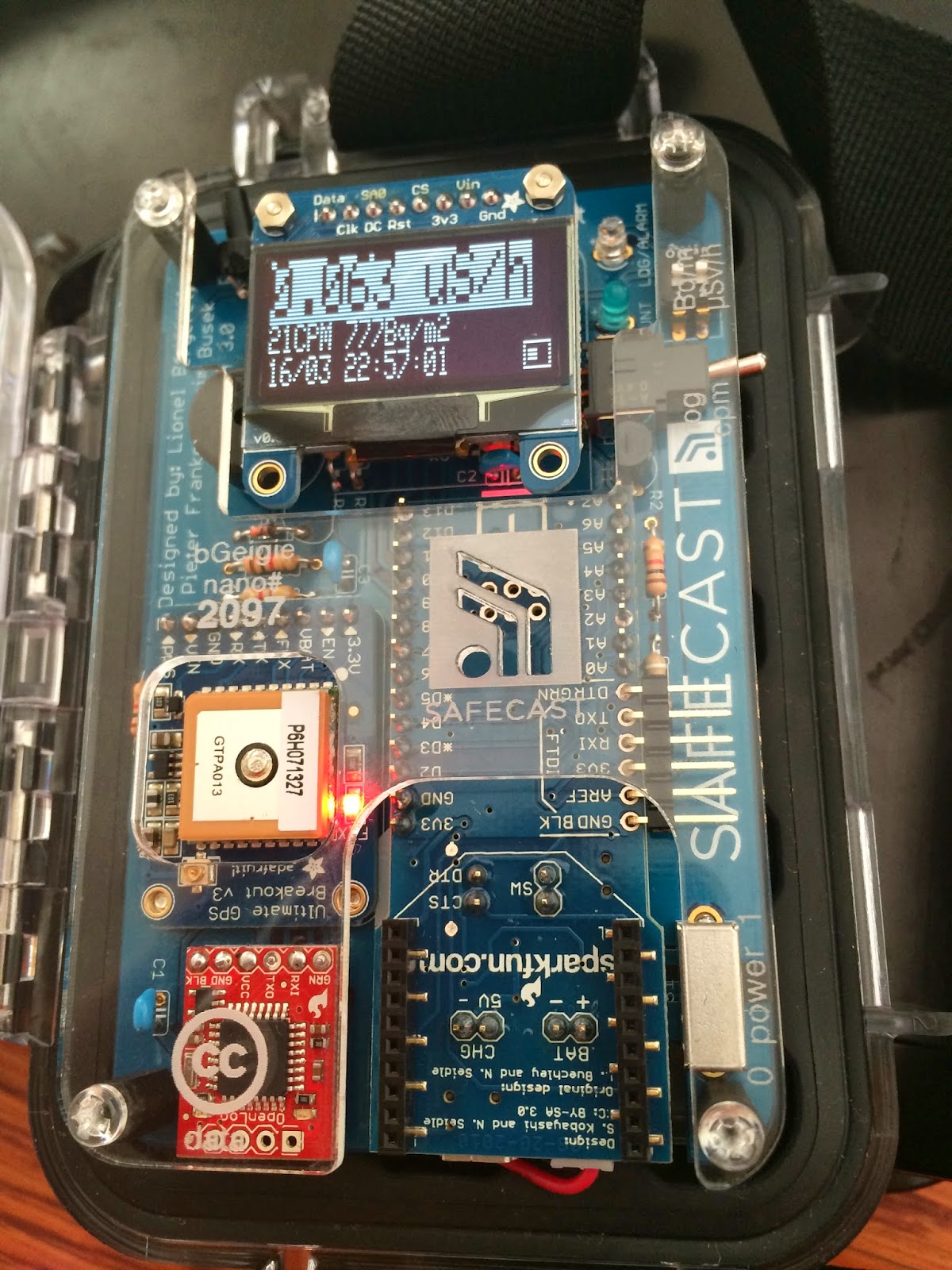In early March I attended an interesting presentation by several of the leaders of Safecast.org. Safecast is a group formed in the aftermath of March 11, 2011 to conduct independent radiation monitoring, and to make the resulting data available to all in an easy to visualize format. The leaders are neither pro- nor anti-nuclear. Rather the group's purpose is simply to make available reliable, accurate data. It filled a gap in the aftermath of the nuclear accident, when there was too little data made available in too difficult a manner to understand.
They have accomplished a lot, to the point where the Japan Post attached Safecast radiation monitors to all the postal delivery motorbikes in several Fukushima cities for a year.
They show that, in fact, radiation levels have declined quite quickly in much of the area affected by the Fukushima accident. On the other hand, the government fixed monitoring stations overstate some of the reduction, since they have been placed in locations such as schoolyards, parks and in front of train stations that were the highest priority for clean up. You can see the Safecast maps here.
In the wake of the tsunami and nuclear disaster, the first issue was lack of availability of monitoring equipment. So Safecast designed its own monitors, which log data including GPS and timestamp information, and which is uploaded to their database. They now have over 15 million monitoring data points.
They have gone through several iterations/generations of monitors and the latest, the Nano bGeigie, won the Japanese "Good Design Award" in 2013. It is available only as a kit, so I attended their workshop on Sunday and built one. My first electrical soldering experience since ... high school? Middle school? In any event, it works!
One of the great things about building a kit is that you actually have a great sense of what the components are and now they work together.









